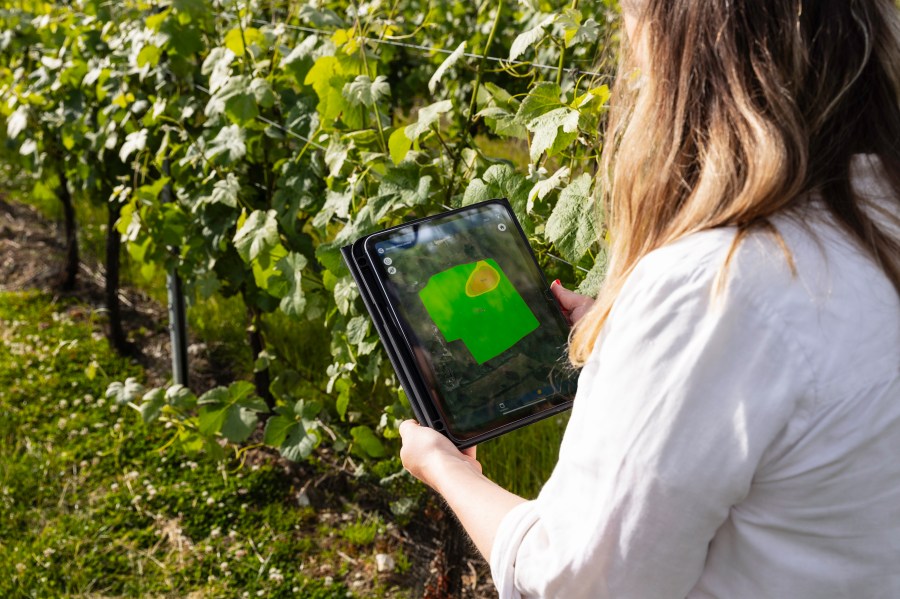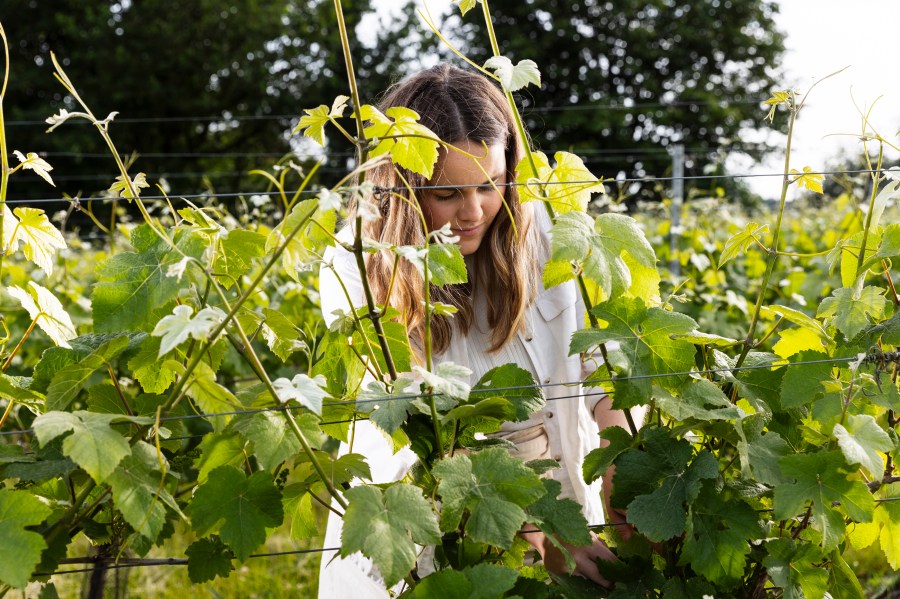What made you want to become an agronomist?
I knew from a young age that I wanted to work outdoors and with the natural environment. As a child I grew up by the sea and spent summer holidays in the countryside. With this grew a fond affiliation to protect and nurture our natural landscapes and specifically the wildlife that resides in it. This led me to undertaking a degree in physical geography at the University of Brighton where I was one of the first to discover microplastics in UK tidal waters. After I graduated, I worked for the Animal Plant Health Agency as a plant health inspector where I gained relevant experience and interest in agronomy. For me, agronomy is the perfect combination of all my interests; working outdoors, sharing my knowledge of soil, plants and climate to help growers, introducing innovative methods to grow more sustainably and being able to integrate new and traditional practices.
What is it about agronomy that you enjoy the most?
First and foremost, the most exciting aspect of viticulture is seeing the final bottle on the shelf, whether that be in a supermarket, boutique shop or wine bar. Being a part of the considerable team effort taken to hand craft the bottle, from selecting the right site and choosing rootstocks to continuous monitoring and implementing a bespoke spray regime, that feeling never gets old. It is particularly satisfying being able to spot an issue whilst in its infancy or suggesting integrated crop management techniques with the aim of preventing crop loss or reduced quality. For example, many growers aren’t aware of early monitoring systems such as Light Brown Apple Moth pheromone traps or Spotted Wing Drosophila lures, which can be a game changer in understanding individual pest populations within the vineyard prior to numbers increasing and observing crop damage. These monitoring systems have a sustainability advantage as they contribute to reduced chemical inputs. The grower can monitor pest populations and target chemical application at the correct timing if the economic threshold has been reached.
What has been your most rewarding experience so far?
I am working with growers to successfully engage with the Sustainable Farming Incentive (SFI). The SFI is a new government scheme which is designed to harmonise growing crops and safeguarding the environment whilst providing an additional income source for vineyard businesses. There are 102 actions where growers can be paid, these include planting areas of pollen and nectar mix to encourage wildlife and pollinators, incorporating a soil management plan or converting to organic management.
Being able to specialise in the SFI opportunities and provide expertise to businesses has been particularly rewarding for me as the scheme eases the financial pressure on growers and allows them to focus on what they do best – growing a great quality crop. It also incorporates what attracted me to agronomy in the first place; enhancing and enriching localised habitats to increase biodiversity, which in turn will also benefit the health of our vineyards. It’s a no-brainer.
If you could eradicate one disease to help growers in the vineyard what would it be and why?
This may be an obvious choice, but I would choose Botrytis. I am sure many growers would agree with me that Botrytis is demoralising due to the timing of its presence. We spend all year devoting hundreds of hours to pruning, spraying, selecting shoots, lifting wires, tucking, tying, thinning, installing pest monitoring systems, doing the nightly badger watch, installing deer fencing, discouraging the birds and wasps (I could go on), and then four weeks before harvest just as you think you’re in the clear, you notice a small patch of fluffy grey mould on a lovely little berry – great!
What has been your most challenging problem agronomy wise?
One of the most difficult issues every agronomist faces is the ever-reducing selection of chemical products. The word ‘chemical’ tends to be a bit of a buzz word. I find it triggers a negative response largely due to the bad reputation for damaging the environment, killing biodiversity and being a threat to public health, this is in part due to age-old practices where chemistry and application limits were far less regulated. In the present day we need chemistry to produce food and drink to sustain the population.
In my role, I encourage management programmes that incorporate a balanced and integrated approach. For example, applying chemical alongside disease forecast models for a more targeted approach and using biological products or introducing natural predators. A new favourite product of mine for downy and powdery mildew control is utilising the extract from yeast cell walls to initiate the plants defence system and produce an immune response. The reaction can be likened to antibiotics in humans. However, in high pressure periods we need chemistry to protect and eradicate disease from our crops and with the number of approved products disappearing as well as a reduced number of applications and dose rates, it is becoming more difficult every year.

What do you think the future holds for the viticulture industry?
I think the viticulture industry is a very exciting place to be at the moment. It’s been growing (pardon the pun) for the past 40 years and according to DEFRA, has become the quickest expanding sector in British agriculture. English and Welsh Sparkling is now being recognised as a serious contender and frequently beating French Champagnes in blind tastings. With parts of the UK presenting perfect sweet spots for growing grapes, occupying sunny south-facing slopes, free draining soils coupled with the temperature increase, the future is looking bright.
What will be the biggest impact on agronomy over the next 20 years?
On the whole, I feel climate change is going to present an array of issues with the level of challenge currently unknown. Increased winds will create channels for new pest introductions, higher rainfall will increase disease pressure and bring waterlogged soils, and droughts will create a water shortage during peak growing periods. On the radar is Xylella fastidiosa, a bacterial disease known to affect grapevines and currently causing total crop death in French and Italian olive plantations.
Climate change means it will be even more important to know the technicalities of your vineyard and maximise the available natural resources. The digital farming platform Omnia enables growers to optimise yields, with features including localised disease forecast models and soil scanning that can measure soil carbon along with Organic Matter and other key nutrients. Using the soil carbon tool coupled with Omnia’s carbon dioxide emissions calculator, growers are in a good position to map, measure and monitor carbon to a high level.

For more like this, sign up for the FREE Vineyard newsletter here and receive all the latest viticulture news, reviews and insight




